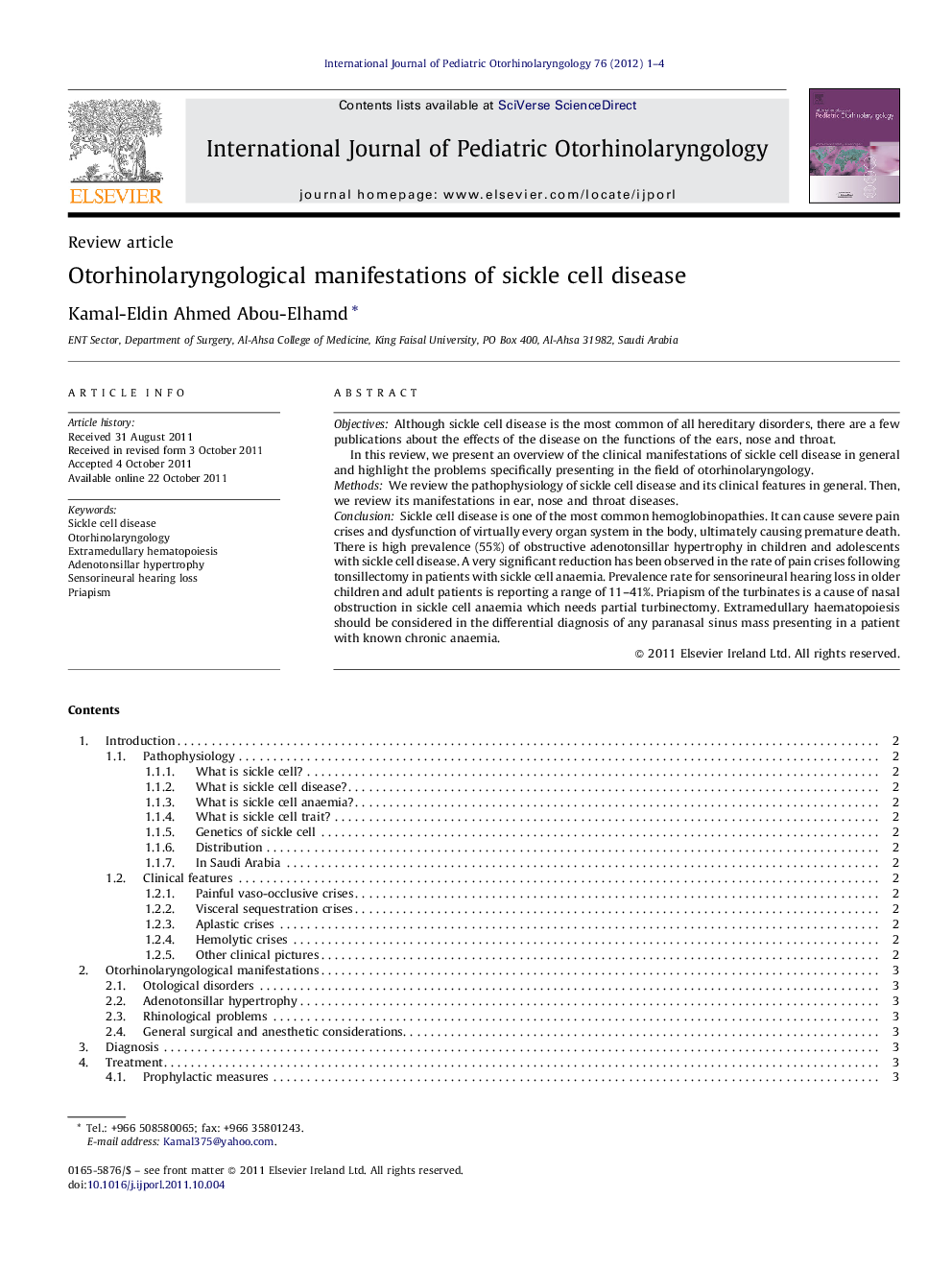| Article ID | Journal | Published Year | Pages | File Type |
|---|---|---|---|---|
| 4113317 | International Journal of Pediatric Otorhinolaryngology | 2012 | 4 Pages |
ObjectivesAlthough sickle cell disease is the most common of all hereditary disorders, there are a few publications about the effects of the disease on the functions of the ears, nose and throat.In this review, we present an overview of the clinical manifestations of sickle cell disease in general and highlight the problems specifically presenting in the field of otorhinolaryngology.MethodsWe review the pathophysiology of sickle cell disease and its clinical features in general. Then, we review its manifestations in ear, nose and throat diseases.ConclusionSickle cell disease is one of the most common hemoglobinopathies. It can cause severe pain crises and dysfunction of virtually every organ system in the body, ultimately causing premature death. There is high prevalence (55%) of obstructive adenotonsillar hypertrophy in children and adolescents with sickle cell disease. A very significant reduction has been observed in the rate of pain crises following tonsillectomy in patients with sickle cell anaemia. Prevalence rate for sensorineural hearing loss in older children and adult patients is reporting a range of 11–41%. Priapism of the turbinates is a cause of nasal obstruction in sickle cell anaemia which needs partial turbinectomy. Extramedullary haematopoiesis should be considered in the differential diagnosis of any paranasal sinus mass presenting in a patient with known chronic anaemia.
